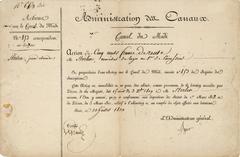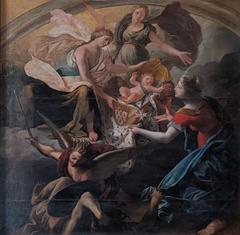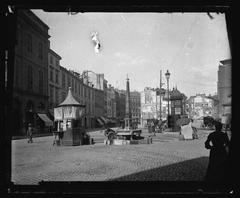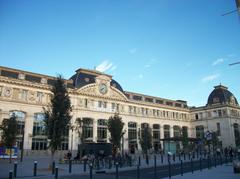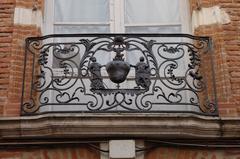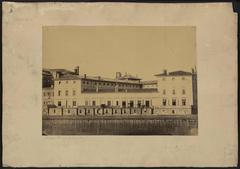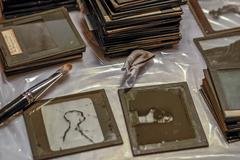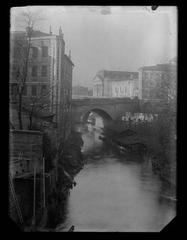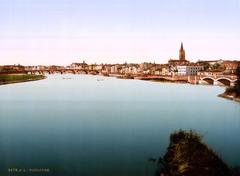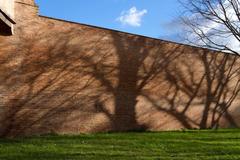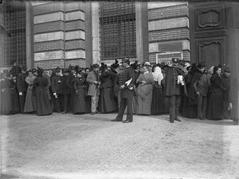Visiting Collège Saint-Rome Toulouse: Historical Site Guide with Tickets and Hours
Date: 14/06/2025
Introduction
Nestled in the vibrant heart of Toulouse, Collège Saint-Rome stands as a testament to the city’s distinguished history, architectural grandeur, and enduring commitment to education. Founded in 1604 by the Fathers of the Christian Doctrine (Doctrinaires), this Renaissance site not only shaped Toulouse’s intellectual landscape but also contributed to its unique urban fabric, often celebrated as “La Ville Rose” for its glowing pink-brick architecture. Though now private property and not regularly open to the public, its stately façade and captivating history make it an essential stop for history buffs and architecture enthusiasts exploring Toulouse’s historic core (Monumentum, French Moments, Gralon).
This guide offers a comprehensive overview of Collège Saint-Rome—covering its history, architectural features, visitor information, surrounding attractions, and practical tips to help you make the most of your journey through Toulouse’s storied streets (POP Culture, Travelsewhere, France-Voyage).
Table of Contents
- Introduction
- Historical Background and Cultural Significance
- Architectural Highlights
- Visitor Information
- Nearby Attractions
- Frequently Asked Questions (FAQs)
- Tips for a Memorable Visit
- Conclusion
- References
Historical Background and Cultural Significance
Collège Saint-Rome’s origins are rooted in the early 17th century, when Cardinal de Joyeuse granted the property—formerly the site of the church of Saint-Romain and a Benedictine convent—to the Doctrinaires, a Catholic teaching order dedicated to advancing religious education during the Counter-Reformation (Monumentum). The college quickly became a leading center of learning, bolstered by the 1705 bequest of the Bishop of Rieux’s library, which was opened to the public and embodied the Enlightenment ideals of intellectual accessibility (Gralon).
Through the centuries, the institution played a vital role in shaping Toulouse’s academic reputation—an influence still visible in the city’s renowned universities and legal faculties (French Moments). The college ceased its educational activities following the French Revolution, after which its church was demolished in 1800. The main building survived, subsequently converted into apartments, and remains protected as a historic monument since 1946 (POP Culture, Toulouse Tourisme).
Architectural Highlights
Urban Setting and Context
Collège Saint-Rome is situated on Rue Saint-Rome, one of Toulouse’s most emblematic pedestrian streets, surrounded by a tapestry of Renaissance mansions, medieval relics, and 19th-century façades. This urban setting places the college amid other architectural gems like Hôtel d’Assézat and Hôtel du Vieux-Raisin, making it a key stop on any walking tour of the city’s historic center (Travelsewhere).
Facade and Interior Features
The building’s three-story façade draws inspiration from Italian Renaissance palaces, constructed in Toulouse’s signature pink brick with elegant stone accents. Notable architectural elements include:
- Main Entrance: Framed by pilasters, capped with a prominent cornice, and adorned with an ornate escutcheon bearing a cross and rosary—symbols of its religious and educational heritage (POP Culture).
- Staircase Axis: Marked by three grand, superimposed windows, emphasized by rusticated pilasters and a denticulated pediment.
- Courtyard Design: Although interior access is rare, the building is arranged around a central courtyard, with arcaded walkways and large windows maximizing natural light—features typical of Renaissance academic architecture.
The harmonious blend of brick and stone underscores the city’s moniker “La Ville Rose,” with the façade’s hues shifting beautifully in the changing daylight (TryGlobe).
Visitor Information
Visiting Hours and Access
- Regular Access: Collège Saint-Rome is private property and is generally not open to the public. The exterior can be admired year-round from Rue Saint-Rome.
- Special Access: Occasional guided tours are offered during events like the European Heritage Days (Journées du Patrimoine), providing rare opportunities to see the interior (Monumentum).
Ticketing and Tours
- No Standard Tickets: Since the site is not regularly open, there are no standard tickets or visiting hours.
- Event Tours: For special events, check with the Toulouse tourism office or official event websites for booking and schedule details.
Accessibility
- The surrounding historic center is pedestrian-friendly, though narrow streets and cobblestones may pose challenges for those with mobility impairments. If granted interior access during special events, confirm accessibility in advance.
Getting There
- Collège Saint-Rome is centrally located and easily reached by public transport, with several bus and metro stops nearby. The area is best explored on foot.
Photography Tips
- Capture the façade in early morning or late afternoon light for the best color and detail.
- Use a wide-angle lens to photograph the entrance and architectural features due to the narrow street.
- Respect private property; do not attempt to enter without official permission.
Nearby Attractions
Combine your visit to Collège Saint-Rome with these nearby highlights for a rich experience:
- Place du Capitole: Toulouse’s main square and administrative heart (The Crazy Tourist).
- Basilique Saint-Sernin: Europe’s largest Romanesque church and a UNESCO World Heritage Site.
- Hôtel d’Assézat: A Renaissance mansion housing the Bemberg Foundation’s art collection.
- Hôtel Dumay and Musée du Vieux Toulouse: Explore more of the city’s heritage just steps away.
These sites can be included in a walking tour, maximizing your exploration of Toulouse’s historic core (Travelsewhere).
Frequently Asked Questions (FAQs)
Can I visit the inside of Collège Saint-Rome?
No, regular interior access is not permitted due to its status as private property. Rare guided tours may be available during special heritage events.
What are the visiting hours?
There are no official visiting hours; the exterior can be viewed at any time.
Are guided tours available?
Guided tours may be offered during European Heritage Days. Check with the Toulouse tourism office for updates.
Is there an entrance fee?
No fee is required to view the exterior. Special event tours may have a booking fee.
Is the site accessible for visitors with disabilities?
The streets are pedestrian-friendly but can be narrow and uneven. Confirm accessibility for any special event tours in advance.
Tips for a Memorable Visit
- Plan Around Special Events: European Heritage Days in September may offer rare opportunities to see the interior.
- Take a Guided Walking Tour: Learn more about the city’s layered history and architecture by booking a local guide.
- Use the Toulouse Tourist Pass: For discounts on museums and public transport (France-Voyage).
- Download the Audiala App: Enhance your visit with self-guided tours and interactive cultural maps.
- Stay Informed: Follow official tourism channels for the latest updates and event details (Toulouse Tourisme).
Conclusion
Collège Saint-Rome embodies Toulouse’s fusion of educational, religious, and architectural heritage within its historic heart. While interior visits are rare, the preserved Renaissance façade offers a compelling glimpse into the past. Its role in public education and its architectural splendor, rooted in Italianate influences and the city’s signature pink brickwork, make it a must-see landmark on any Toulouse itinerary. Enhance your visit by combining Collège Saint-Rome with neighboring attractions, joining a guided walking tour, and utilizing digital resources like the Audiala app for a deeper cultural experience.
References
- Monumentum – Collège Saint-Rome Toulouse
- French Moments – Toulouse History
- Gralon – Collège Saint-Rome, Toulouse
- POP Culture – Collège Saint-Rome, Toulouse
- Travelsewhere – Visiting Toulouse France
- France-Voyage – Collège Saint-Rome, Toulouse
- Toulouse Tourisme – Official Tourism Website

